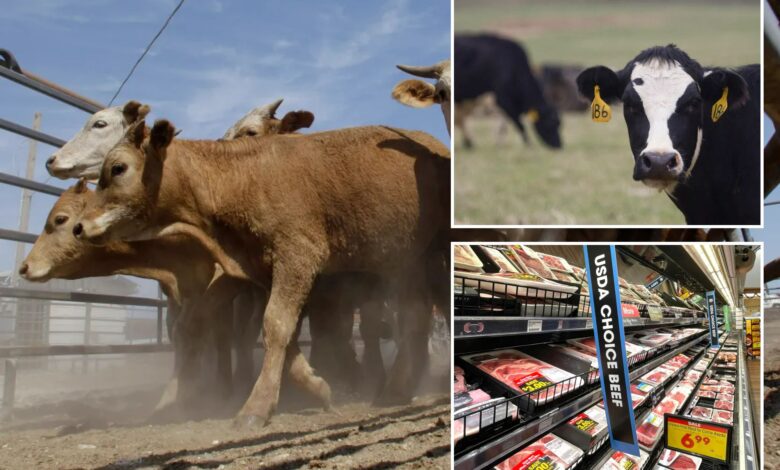Beef prices expected to stay high as drought causes America to run low on cows

America is running low on cows, according to new numbers out this week from the US Department of Agriculture. The figures show ranchers have fewer cattle and that is contributing to the cost of beef being more expensive.
According to the USDA, nationwide beef cattle inventory dropped to 28.2 million this year – the lowest level since the 1970s and down 2% from a year ago.
Agricultural economists say persistent drought over the last three years, along with high input costs and inflation are putting pressure on both consumers and farmers.
Rancher Hampton Cornelius says his family farm in Weld County, Colorado. has around 200 calf cow pairs. Cornelius said his family farm is called Coyote Ridge Ranch.
His family sells seed stock and cow genetics to beef ranchers across the United States. Cornelius said those who work in his sector of agriculture only make up a small percentage of the United States population.
“We love being able to see something, an animal we take care of every day thrive and have a great life and still be beneficial to the population,” Cornelius said.
Cornelius said he hasn’t had to reduce his herd size but other beef farmers have.
“Demand is there and the costs, you know the price is there, but the expenditures and the costs associated where that production have escalated to the point where it’s kind of balanced out where we have gotten an increase in price,” Cornelius said.
Experts say ongoing drought the last three years affected the biggest beef-producing states: Texas, Nebraska, Kansas, California, and Oklahoma.
Bernt Nelson is an economist for the American Farm Bureau Federation. Nelson says farmers have had to stay resilient through persistent drought the last few years.
“We saw drier and warmer temperatures in some of the most highly concentrated areas of livestock production in the United States,” Nelson said. “Combined with high input costs, inflation putting upward pressures on both consumers and farmers, we saw a lot of farmers faced with the decision do we want to keep producing or do we want to try and rescue out herd size or do we want to try and get out of the business all together.”
Drought also drove up feed prices for farmers nationwide.
Texas is the number one beef producer in the United States.
Cody Maxwell is an Agricultural Resources County Agent at Texas A&M University in College Station, Texas. Maxwell said feed prices are high for farmers in Texas as well.
“We’ve seen hay prices in the state of Texas go from what we would call normal for a high-quality bail of hay of about 55 dollars a bail… we have seen that increase from 120 to 125 dollars a bail,” Maxwell said.
Economists say demand for beef has remained strong since the COVID-19 pandemic. During lockdowns, people started grilling more.
Beef sold for an average of $5 per pound last year, according to the Bureau of Labor Statistics.
Experts predict that prices will climb over the next few years.




